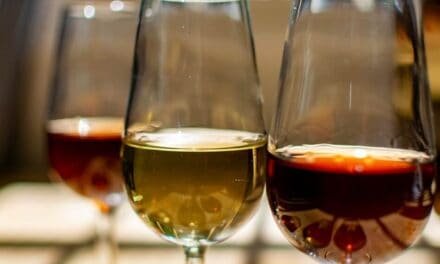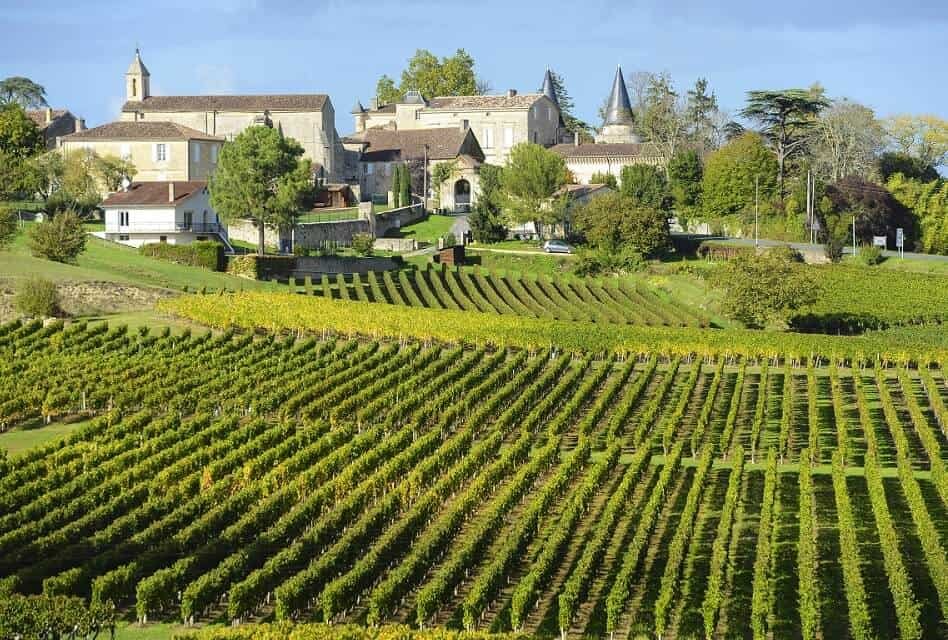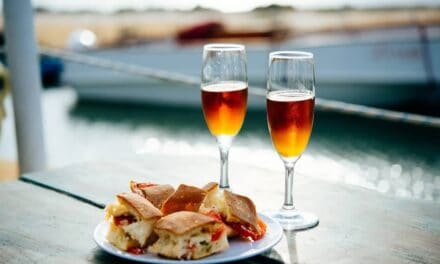If you love a good bottle of wine, you probably have heard of Burgundy wines. But do you know why these wines are so special and, sometimes, so expensive? If you want to know all the details about Burgundy wines, this article is for you.
Burgundy wines are high-quality wines from the French Burgundy region (French: Bourgogne). They can be white or red, and most of them are dry. Due to the different soil and climate conditions in the area, they can offer a wide variety of flavors.
Burgundy has a strict classification system that is rooted in the region’s long winemaking tradition, complicated land ownership regulations, and versatile soils and microclimates. In the following paragraphs, we will discuss these aspects in detail.
WHAT GRAPES ARE BURGUNDY WINES MADE FROM?
There are two major varietals that Burgundy vintners use to make their wines: Chardonnay for white Burgundy and Pinot Noir grapes for red Burgundy. The two make up more than 80% of the region’s plantings.
Besides, winemakers grow small quantities of red Gamay and white Aligoté and Pinot Gris grapes.

Pinot Noir Grapes
WHERE DOES BURGUNDY WINE COME FROM?
Burgundy wines come from a region with the same name: Burgundy. It is located in the eastern-central part of France between the rivers Loire in the west and Saône in the east. The region’s biggest cities are Auxerre, Dijon, Mâcon, and Nevers.
Due to its location in the center of the country, Burgundy has a continental climate with hot summers and cold winters. This climate makes the weather unpredictable, especially around harvesting time. In some years, a mild fall can produce excellent grapes that vintners process into excellent wines; in others, frost or hail can ruin a vintage’s yield. Thus, the quality of Burgundy wines can differ significantly from year to year.
As a wine region, Burgundy is very diverse. It consists of five primary areas that produce different types of wines (more details later):
- Chablis
- Côte de Nuits
- Côte de Beaune
- Côte Chalonnais
- Mâconnais
Burgundy Wine Classifications
Within these areas, there are more than 100 specific regional appellations that belong to different quality categories. These categories were introduced in 1861 and integrated into French AOC laws in 1936.
- Regional appellations are the most general category and cover relatively large areas. There are 23 of them in total, such as the Bourgogne Hautes Côtes de Beaune AOC. About half of all Burgundy wines belong to one of the regional appellations.
- Communal appellations (or village appellations) cover much smaller areas that usually only include one specific village. Logically, the bottle label carries the village’s name, for instance, Saint-Émilion AOC. About 37% of all wines throughout the region belong to one of the 44 communal appellations.
- Premier Cru appellations (English: first growth appellations) are small plots (French: climat) within a communal appellation known to produce high-quality wines consistently. Only one in ten Burgundy wines (or 10%) belongs to this category. Wine lovers can identify them by their label: They have to carry the name of the village they come from together with the phrase “1er Cru” or “Premier Cru”. In addition, they may also state the plot name, but that isn’t mandatory.
- Grand Cru appellations (English: great growth appellations) describe the best of the best wines from Burgundy. Just 1% of all wines from the region may carry this label. They are the best, most famous, and often most expensive wines. They must have the term “Grand Cru” printed on their bottle labels.
Chablis Wine Classification
The Chablis subregion is the northernmost subregion of Burgundy. It is particularly noteworthy because it has its own appellation system. Although that system is comparable to the Burgundy system, it differs in some details:
- Petit Chablis wines come from the outskirts of the area. They are high in acidity and have intense citrus flavors.
- Grapes for Chablis wines grow on the slopes near the city of Chablis. They tend to have perceivable mineral notes than Petit Chablis wines.
- Premier Cru Chablis wines come from specific vineyards within the Chablis region. They are very well-balanced and have a distinctive flavor profile.
- Grand Cru Chablis wines are very elegant because they age in oak. Often, they offer slightly sweet notes of honey. The grapes for these wines are cultivated on the south-facing slopes north of the city.
WHY ARE BURGUNDY WINES SPECIAL?
The Burgundy region is one of the world’s most prestigious wine regions, and Burgundy wines are among the best and most expensive wines. This prestige is the result of the region’s long winemaking history.
Burgundy Winemaking History
Winemaking in Burgundy goes back to the second century when the Romans grew grapes in the region. But the rise to fame started around 600 when the Catholic church became involved in winemaking after King Guntram of Orléans donated a vineyard to the clergy.
In order to ensure a steady supply of wine for the holy masses, the influence of the church became more and more important in the following centuries. Religious orders like the Benedictines and the Cistercians founded monasteries.
But the monks did not only make great wines. They were also eager to preserve their knowledge for future generations of vintners. So even in turbulent times of war and disaster, their winemaking skills did not get lost.
The First Regulations
In the late 14th century, the first regulations were imposed on local vintners. Duke Philip of Burgundy made two crucial decisions to protect the quality of wines from the region:
- First, he prohibited using the high-yield varietal Gamay for making Burgundy wine.
- Second, he ruled that winegrowers could not use organic fertilizers anymore.
After that, winemakers used only Pinot Noir to make red wine and Pinot Gris for white wine. Later, Chardonnay was introduced as an alternative for white wine producers. While the output of these varieties was significantly lower, they contributed to higher wine quality.
Starting in the 17th century, the church became less influential. Many vineyards that were owned by monasteries were sold to private citizens. After the French revolution in 1789, this process was completed, so all vineyards were in private ownership.
Napoleon’s Inheritance Laws
In the following decades, the inheritance laws introduced by Napoleon impacted land ownership massively, though. The law forced landowners to divide their property equally among their descendants. As a result, vineyards underwent continuous subdivision, and today, many vintners own only a couple of vines.
In the 20th century, Burgundy went through many troubles. The economic depression of the 1930s and World War II from 1939 to 1945 left many vineyards abandoned or devastated. After the war, vintners tried to revive their businesses. The extensive use of chemical fertilizers was an important means for this purpose. And while it led to high yields, it negatively affected the soil quality and the wines.
By the end of the century, most Burgundy winemakers changed their approach. They put their focus on making high-quality wine while accepting lower outputs. And the extraordinary quality of today’s Burgundy wines is the result of these efforts.
Burgundy Terroir
As mentioned before, the monks that cultivated Burgundy’s vineyards in the medievals understood the concept of terroir very early. Since then, they forwarded their findings regarding soil, topography, and climate and their impact on wine quality. Today, local winemakers still base their work upon this information.
In fact, Burgundy might be a wine region where the concept of terroir is valued more than in any other part of the world. Vintners are very conscious of their vineyards’ soils. And indeed, these soils are special.
The reasons go back to the Mesozoic era, a period from about 250 to 65 million years ago. At that time, the landmass that is France today did not exist. The whole area was a sea with tropical conditions. And it was full of life: Corals, oysters, and many other creatures lived there. When the sea withdrew 60 million years ago, their remains transformed into a particular type of limestone soil called Kimmeridgian. Vines, especially Chardonnay plantings, flourish in this soil.
Another factor that determines the quality of Burgundy wines is the climate. Due to the different altitudes, vineyard orientations, and prevailing winds, various microclimates can be found throughout the region. These specific conditions affect grape characteristics and, consequently, the quality and taste of the resulting wines.
HOW DO BURGUNDY WINES TASTE?
Burgundy wines can be either red or white, but they are always dry. The numerous subregions of Burgundy produce very versatile wines, although most are made from just two varietals: Pinot Noir and Chardonnay.
Chablis
The only wines that come from the Chablis area are Chardonnays. They typically are high in acidity, providing a crisp and fresh experience. Besides flavors of green and citrus fruits, you can expect distinct mineral notes from the region’s limestone soils. Grand Cru wines often spend some time in oak barrels and develop exquisite flavor profiles with honey notes.
Côte de Nuits
Côte de Nuits vintners produce excellent Pinot Noir wines. They are rich and concentrated and can offer a wide variety of flavors. Most commonly, you can sense ripe red and black fruits. Many of these wines are very age-worthy, so they will get even better when you cellar them.
Côte de Beaune
Pinot Noirs from the Côte de Beaune region are powerful but well-balanced. They combine fruity, mineral, and earthy flavors with a decent acidity level and robust tannins. When aged in oak, the wines develop a creamy texture with vanilla notes.
White wines from Côte de Beaune offer zesty acidity, delicious citrus aromas, and mineral notes. Some develop nutty flavors during the aging process.
Côte Chalonnais
Red wines from the Côte Chalonnais region are less intense and less complex than other appellations’ Pinot Noirs. Also, they do not have much aging potential. Instead, their fruit-forward and rustic characteristics are perfect for early consumption.
On the white side, Chalonnais has something unique to offer: It is home to Bouzeron, Burgundy’s only appellation that produces Aligoté wines with AOC status. These vibrant, light-bodied white wines with subtle spicy notes are comparable to Pinot Gris wines.
Besides still wine, you can also find sparkling Crémant wines from Chalonnais. Local winemakers produce red, white, and rosé versions.
Mâconnais
Compared with other appellations like Chablis, Mâconnais has a relatively warm climate. The higher temperatures contribute to powerful Chardonnays that feature citrus, green and tropical fruits, as well as herbal aromas. Typically, they don’t get in touch with oak.
Red Mâconnais wines come with red and black fruit flavors and earthy notes such as mushrooms. When aged, they also can have aromas of dried fruits and spices like pepper.
HOW TO SERVE BURGUNDY WINES
To provide the best Burgundy experience to your guests, make sure to serve them in the right glasses and at the right temperature. Also, consider decanting them.
Which Is the Right Glass for Burgundy Wine?
The best glass for red Burgundy wine is a Burgundy glass. These special glasses are designed to highlight the wines’ characteristics. Their wide bowls support aeration and help the fruity aromas to shine. Besides, the rim design directs the wine to the right part of the palate so that you can enjoy its outstanding balance of fruity flavors, acidity, and tannins.
For white Burgundy, choose Chardonnay glasses. They have round bowls to allow sufficient airflow without over-oxidizing the wine.
If you do not have these particular glasses, choose standard red wine glasses or standard white wine glasses.

Riedel Burgundy Glasses (Set of 2)
$64.97
from: Wine.com
What Is the Right Serving Temperature for Burgundy Wine?
The optimal serving temperature depends on the wines’ color and quality:
- White Burgundy should have between 47 and 52°F (8 – 11°C).
- For reds, go for 57 to 61°F (14 – 16°C). Aim at the lower end of these ranges for entry-level wines and the upper end for high-quality wines.
Should You Decant Burgundy Wine?
Many Burgundy wines benefit from decanting. That is true in particular for young red wines that have very dominant tannins and for oaked whites. Besides, you should decant unfiltered wines to get rid of their sediments. For many old vintages, that might be necessary, too.
In general, between 30 minutes and 1 hour of decanting should be sufficient for most Burgundy wines. Only reds that are 10 years or older and unoaked whites typically don’t need that much time. You can pour them directly into the glasses, given they don’t contain sediments.
HOW TO STORE BURGUNDY WINES
Storing Burgundy wines does not differ much from storing other wines. Make sure to keep them in a dark and cool place. Shield them from vibrating devices and strong-smelling chemicals.
Can Burgundy Wine Go Bad?
Burgundy wines can go bad if you fail to store them properly. The best hint for spoilage is a bad, vinegar-like smell.
How Long Do Burgundy Wines Last When Open?
After opening it, you should finish a bottle of Burgundy within 3 to 5 days. Make sure to reseal it and put it into the fridge to prevent it from going off.
Can Burgundy Wine Be Aged?
Most Burgundy wines can be aged. Depending on the subregion they come from and the category they belong to, the optimal aging time can vary. Be aware that storing time counts from the vintage year, not the purchase date. So a 2015 wine with a maximum shelf life of 4 years should be consumed in 2019 at the latest.
For white Burgundy, follow these guidelines:
- Bourgogne Blanc and most Mâconnais wines should be consumed when still young. Store them for 4 years maximum.
- You can cellar white village wines for up to 5 years.
- Premier Cru wines should be aged for at least 4 years and a maximum of 7 years.
- The optimal storing time for Grand Cru wines is between 4 and 10 years.
Red Burgundy wines have more aging potential than their white counterparts. Here is a general overview of the different types:
- Bourgogne Rouge and red village wines benefit from 4 to 7 years of aging.
- Premier Cru wines improve over the time of 6 to 12 years.
- Grand Cru wines should be aged 10 to 20 years before opening them.
- For more detailed information on an appellation level, check out this website. It will tell you whether a wine is ready for consumption or should be stored longer based on its origin and vintage.
BURGUNDY WINE FOOD PAIRING
As Burgundy wines are very versatile, so are the foods they pair with. Here are a couple of suggestions:
Basic Bourgogne Rouge goes very well with simple dishes, especially those from French cuisine. Think of pâtés and terrines, creamy chicken dishes, or rabbit. You can also pair these wines with mild creamy cheeses and French sausage specialties.
Better Pinot Noir wines are great with all types of lean red meat, such as pork, lamb, game, or beef. The older the wine is, the richer can the specific dish be. You can also pair red Burgundy wines with roasted white meat, including chicken, duck, and rabbit. Vegetarians can combine them with mushroom dishes and creamy vegetable meals.
Bourgogne Blanc is perfect with most chicken dishes and pasta with tomato-based sauces. Seafood like seared scallops or crab is a great option, too.
High-quality white Burgundy is delicious with rich white meats and heavy fish dishes. Especially Chablis wines are perfect for matching oysters and other types of shellfish. Other matches for white Burgundy are creamy soups or vegetarian meals like risotto or pasta with a white sauce.
SHOPPING TIPS
When shopping for Burgundy wines, you should have an idea of what you’re looking for. Do you prefer red or white wine? Are you searching for a high-quality wine, or are you okay with an entry-level bottle?
The appellations written on the bottle labels will help you a lot. Here is what to look for:
- Be aware that Burgundy is the English name of the region. Its French name is “Bourgogne”, and logically that is the name you will find on bottle labels.
- Entry-level wines are simply called “Bourgogne rouge” (English: Burgundy red) or “Bourgogne blanc” (English: Burgundy white).
- Village wines are the second tier. They are named after the communes they come from. Usually, their bottle names include “Appellation d’Origine Contrôlée” (short: AOC).
- The best wines have the term “Premier Cru” (or “1er Cru”) or “Grand Cru” on their label.
Why Are Burgundy Wines So Expensive?
There are three reasons for the high prices of Burgundy wines: Producers make only small volumes, there is high demand, and the weather is unstable. Here are more details:
- As we have discussed in the chapter about Burgundy’s history, the region is massively fragmented. Many vintners only own a small number of vines. Logically, they can produce just a small number of bottles per year. This low supply drives up the prices, especially for high-quality wines.
- On the other hand, the prestige of Burgundy wines creates an enormous demand. Especially wealthy wine lovers and collectors try to get their hands on the best vintages.
- Finally, the region’s unsteady weather produces very different results. If the weather is good, it can produce an extraordinary vintage. But bad weather can lead to rather average wines. As wine lovers are aware of this fact, good wines are typically in high demand.
Burgundy Wine Recommendations
Here are some wines to try:
Burgundy Red Wines
Joseph Drouhin Laforet Pinot Noir 2019
- type: red, still, Vintage
- origin: France, Burgundy
- varietal: Pinot Noir
- alcohol: 12.5%
Remoissenet Beaune Teurons Premier Cru 2019
- type: red, still, Vintage
- origin: France, Burgundy
- varietal: Pinot Noir
- alcohol: 14.0%
Domaine Comte Georges de Vogue Bonnes-Mares Grand Cru 2018
- type: red, still, Vintage
- origin: France, Burgundy
- varietal: Pinot Noir
- alcohol: 13.0%
Burgundy White Wines:
Joseph Drouhin Macon Villages 2019
- type: white, still, Vintage
- origin: Burgundy, France
- varietal: Chardonnay
- alcohol: 13.0%
Bouchard Pere & Fils Meursault (Domaine) 2017
- type: white, still, Vintage
- origin: Burgundy, France
- varietal: Chardonnay
- alcohol: 13.5%
Domaine Leflaive Puligny-Montrachet Les Pucelles Premier Cru 2018
- type: white, still, Vintage
- origin: Burgundy, France
- varietal: Chardonnay
- alcohol: 13.0%
Chablis White Wines:
Domaine Drouhin Vaudon Chablis 2020
- type: white, still, Vintage
- origin: Burgundy, France
- varietal: Chardonnay
- alcohol: 12.5%
Brocard Vau de Vey Chablis Premier Cru 2019
- type: white, still, Vintage
- origin: Burgundy, France
- varietal: Chardonnay
- alcohol: 14.5%
William Fevre Chablis Vaudesir Grand Cru 2018
- type: white, still, Vintage
- origin: Burgundy, France
- varietal: Chardonnay
- alcohol: 13.0%
FINAL WORDS
Burgundy wines might be intimidating due to the complicated appellation system and the high-quality bottles’ price tags. But even if you do not want to spend a fortune, you can enjoy a great Burgundy wine. With the information in this article, you have all the details you need to find the right bottle.






